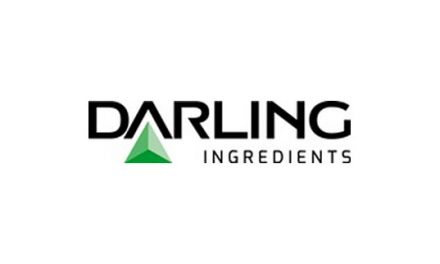Crude Oil Stocks Fall Again
- Decline in crude stocks are a surprize
- Crude oil imports rise about one million barrels
- Price charts point to a bullish turn in the trend
- Natural gas in storage likely to reach four Tcf in October.
Sincerely, Alan Levine Chairman, Powerhouse
The Matrix
The substantial reduction in U.S. crude oil inventories reported for the week ending September 2, 2016 (-14.5 million barrels) was initially explained as a special event. Atlantic basin hurricanes played havoc with offloading imports of crude oil. The cut in crude oil supplies was expected largely to be offset by higher imports to be reported in the subsequent EIA weekly supply/balance.
In fact, crude oil stocks saw very little change in the most recent EIA report. An additional six hundred thousand barrels were taken from supplies. Imports rebounded to 8.1 million barrels daily, adding nearly one million barrels daily to balances. Despite the cuts in inventory, commercial stocks of crude oil remain at a very high 510.8 million barrels.

High inventories are often, but need not be, a precursor to lower prices. And emerging technical chart patterns on WTI crude oil suggest that in fact a bottom in prices may be forming.
Some of those that evaluate crude oil price charts are pointing to a developing head and shoulders pattern. The h/s occurs at extreme price points and looks as if it is developing now.
H/s is considered to be a reversal pattern – one that suggests the path of prices is turning. The chart from Reuters shows such a pattern inverted.
They key take away from this chart is if WTI prices break above the “neckline,” running at $51.67 late in June, a further rally could ensue. And that rally could reach $77—doubling the $25.24 seen from the head to the neckline.
The EIA has announced another change – following the improved reporting of exports – to the Weekly Petroleum Status Report. Weekly commercial crude oil inventories will no longer include “lease stocks.” This will reduce inventories by about 31 million barrels. Lease stocks are stored on drill sites and are not yet available commercial buyers. A one-time decline in commercial crude oil stocks should be seen in the October 13th weekly report.
Supply/Demand Balances
Supply/demand data in the United States for the week ending September 9, 2016 were released by the Energy Information Administration.
Total commercial stocks of petroleum increased 6.0 million net barrels during the week ending September 09, 2016.
Builds were reported in stocks of gasoline, K-jet fuel, distillates, residual fuel oil, and propane. A draw was reported in stocks of fuel ethanol and other oils.
Commercial crude oil supplies in the United States decreased to 510.8 million barrels, a draw of 0.6 million barrels.
Crude oil supplies decreased in three of the five PAD Districts. PADD 2 (Midwest) crude oil stocks declined 1.7 million barrels, PADD 4 (Rockies) stocks fell 0.3 million barrels, and PADD 5 (West Coast) stocks decreased 0.9 million barrels. PAD District 1 (East Coast) stocks were unchanged while PADD 3 (Gulf Coast) increased 2.3 million barrels.
Cushing, Oklahoma inventories decreased 1.2 million barrels to 62.2 million barrels.
Domestic crude oil production increased 35,000 barrels daily to 8.493 million barrels per day.
Crude oil imports averaged 8.062 million barrels per day, a daily increase of 993,000 barrels.
Refineries used 92.9 per cent of capacity, a decrease of 0.8 percentage points from the previous report week.
Crude oil inputs to refineries decreased 200,000 barrels daily; there were 16.730 million barrels per day of crude oil run to facilities. Gross inputs, which include blending stocks, decreased 154,000 barrels daily to 17.126 million barrels daily.
Total petroleum product inventories saw an increase of 6.6 million barrels from the previous report week.
Gasoline stocks increased 0.6 million barrels; total stocks are 228.4 million barrels.
Demand for gasoline decreased 189,000 barrels per day to 9.406 million barrels daily.
Total product demand decreased 1.090 million barrels daily to 20.221 million barrels per day.
Distillate fuel oil supply increased 4.6 million barrels; total stocks are 162.8 million barrels. National distillate demand was reported at 3.276 million barrels per day during the report week. This was a weekly decrease of 412,000 barrels daily.
Propane stocks increased 2.0 million barrels to 101.1 million barrels. Current demand is estimated at 1.139 million barrels per day, a decrease of 89,000 barrels daily from the previous report week.
Natural Gas
According to the Energy Information Administration:
Injections to storage continue at slower-than-normal rate. Net injections into storage totaled 62 Bcf, compared with the five-year (2011—15) average net injection of 69 Bcf and last year’s net injections of 74 Bcf during the same week. Working gas stocks total 3,499 Bcf, 299 Bcf above the five-year average and 184 Bcf above last year at this time. When the refill season began on April 1, working gas stocks were 874 Bcf above the five-year average.
Natural gas analysts are looking at tighter markets going forward. Production of dry gas has fallen 1.1 Bcf daily compared with last year at this time and imports from Canada have fallen as well. This has been shown in lower injection rates this summer. Recent expectations of storage at the end of the injection season are around 3.95 Tcf.
Futures trading involves significant risk and is not suitable for everyone. Transactions in securities futures, commodity and index futures and options on future markets carry a high degree of risk. The amount of initial margin is small relative to the value of the futures contract, meaning that transactions are heavily “leveraged”. A relatively small market movement will have a proportionately larger impact on the funds you have deposited or will have to deposit: this may work against you as well as for you. You may sustain a total loss of initial margin funds and any additional funds deposited with the clearing firm to maintain your position. If the market moves against your position or margin levels are increased, you may be called upon to pay substantial additional funds on short notice to maintain your position. If you fail to comply with a request for additional funds within the time prescribed, your position may be liquidated at a loss and you will be liable for any resulting deficit. Past performance may not be indicative of future results. This is not an offer to invest in any investment program.
Powerhouse is a registered affiliate of Coquest, Inc.
Was this helpful? We’d like your feedback. Please respond to [email protected]
Copyright © 2016 Powerhouse, All rights reserved.










